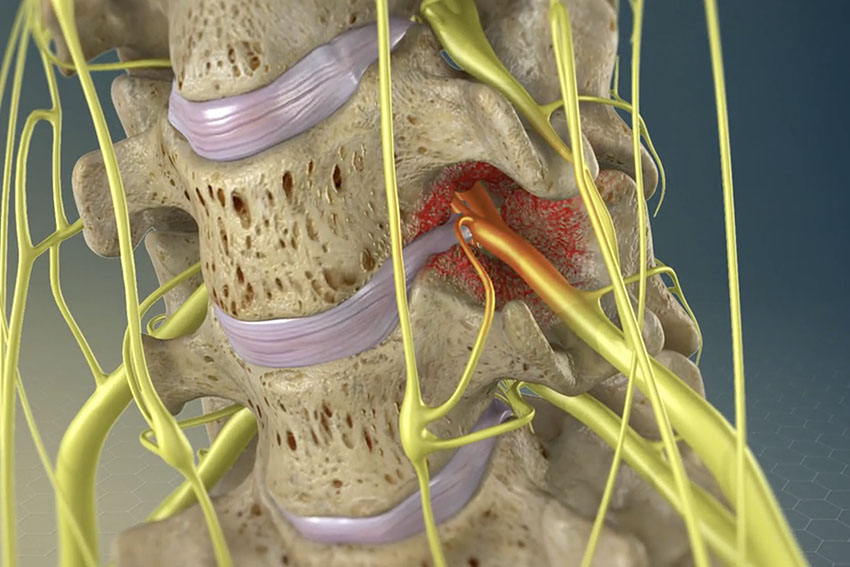
Spinal Instability
The cervical spine is made up of 7 vertebrae. These vertebrae surround and protect the spinal cord from damage. The vertebrae are held together by a disk, and facet joints and strong ligaments. If any of these structures weaken from aging, injury or surgery the spine may require strengthening through a fusion surgery.
Open Posterior Cervical Fusion
Open posterior cervical fusion is usually combined with a posterior cervical laminectomy. The patient is positioned face down in a special head holder. The skin is prepped and draped for sterility. The skin over the back of the neck is incised and separated to expose the spine. The lamina and spinous processes are removed to decompress the spinal cord. Small lateral mass screws are placed in the lateral mass, that is the bone outside the spinal canal. The facet joints are cleaned out of joint material and are packed with bone to fuse the joint. The lateral masses are also roughened up for fusion. Rods are placed through the screws to hold the screws and spine tightly in position. The patient skin is closed up and that patient is taken to the recovery room. Most patients are hospitalized for 3 to 5 days post-op.
Percutaeneous Posterior Cervical Fusion
Open posterior fusion is very painful procedure, that now can be avoided in select patients. DTRAX is titanium cage that stabilizes and fuses the facet joint. It is placed percutaneously into the joint through a small skin incision. This cage locks the joint into position preventing movement and instability. The cage is held in the joint by metal teeth that cut into the bone and a screw. Bone is placed into the cage to fuse the facet joint. Patients are discharged the same day a couple hours after surgery with minimal pain.
